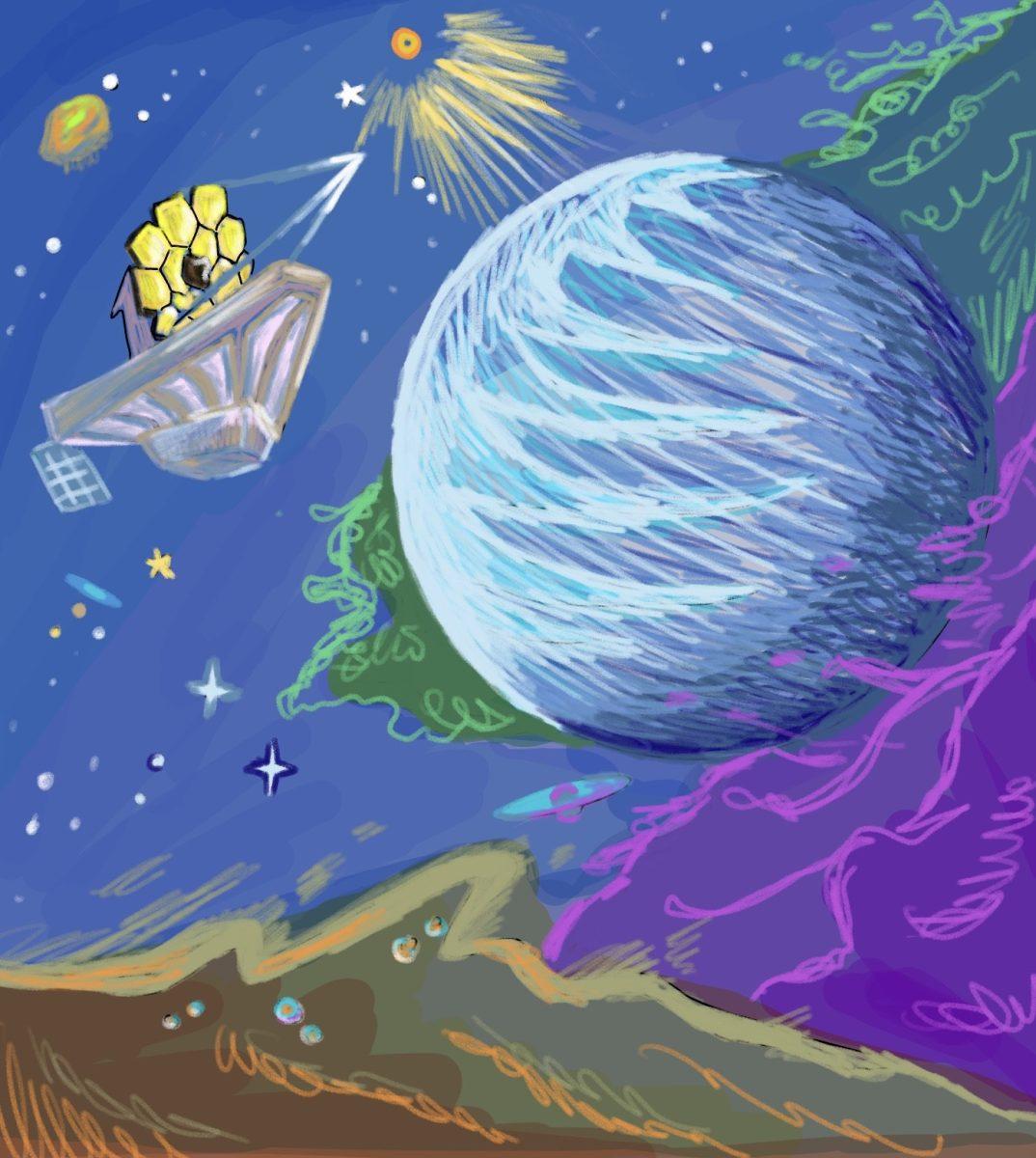New data collected by NASA’s James Webb Space Telescope may suggest the presence of life on K2-12b, a planet outside of our solar system.
K2-12b, an exoplanet orbiting around a dwarf star in the constellation Leo, was first detected by the Hubble Space Telescope. K2-12b’s unique planetary factors makes the theory about extraterrestrial life particularly interesting. It is a possible example of what astronomers refer to as a “hycean planet”—a large, terrestrial planet with a hydrogen-rich atmosphere, covered in liquid oceans. These hycean planets are some of the strongest leads in researchers’ quest to find alien life. They are also significantly larger than our planet—K2-12b has a radius that is 2.6 times larger than that of Earth.
Under close observation, researchers noted that K2-12b has an atmosphere consisting of unusually high amounts of carbon dioxide and methane. Researchers have also picked up trace amounts of the chemical compound dimethyl sulfate (DMS), which is only produced by organisms on Earth. The presence of DMS suggests that some equivalent to phytoplankton may exist on K2-12b’s surface. There was also a notable shortage of ammonia on the planet, another possible indicator of life. Another exciting prospect is that the planet is located in its star’s habitable zone (the area close enough to the star where life could hypothetically form).
These findings come with several caveats. NASA described theories of DMS’s presence on K2’s surface to be considerably less “robust” than the other findings, such as the presence of carbon dioxide or methane. This is because the process of detecting chemical signatures by analyzing wavelengths of light emitted by the molecules is not always accurate. When discussing this finding, researchers drew parallels to the erroneous discovery of phosphine in the upper atmosphere of Venus in 2020, which led many to incorrectly believe that life was present on Venus.
Because of the technical issues associated with detecting trace amounts of molecules light-years away from Earth, there is an ongoing debate over whether hycean worlds are reasonable candidates for life. Due to their carbon-heavy atmospheres, many experts believe that these planets would have a runaway greenhouse effect, possibly driving any life on them to extinction or preventing the formation of liquid oceans. As of right now, experts simply do not have enough data to confirm or deny these hypotheses, given the difficulty of studying in this field.
Regardless of whether or not K2-12b harbors life, the findings still represent a major technological leap for the scientific community. Astronomical science has progressed at an incredible rate, to where we can analyze the atmospheric composition of distant planets for the first time. Further, devices like the Webb Telescope are unveiling secrets of the universe in ways never seen before. In the modern age of exoplanet analysis and improved telescopes, it seems likely that researchers might discover solid proof of extraterrestrial life within our lifetimes.






































































